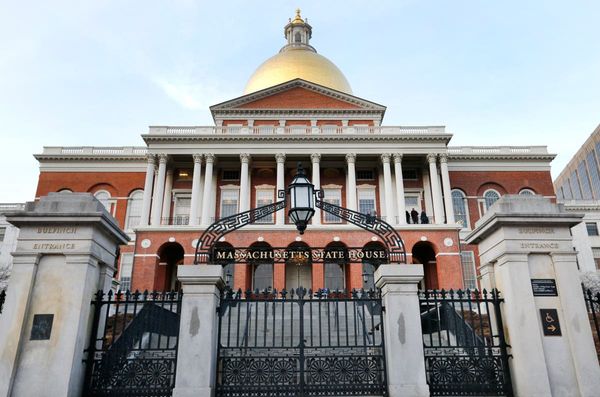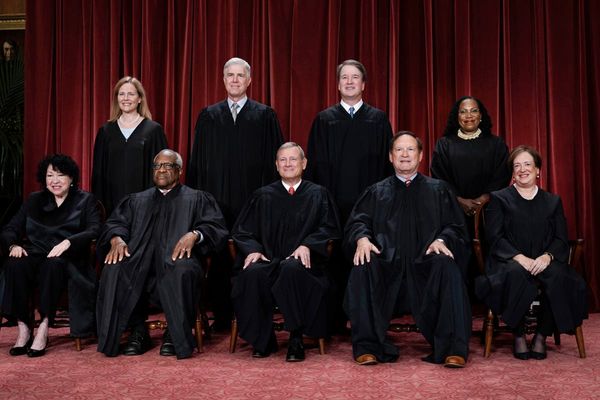The Biden administration will propose a rule this month to cut greenhouse gas emissions from power plants, a central plank to meet its climate targets, and if enacted, a first in U.S. history.
The proposal is expected to include provisions to require the installation of emissions-trapping equipment known broadly as “carbon capture” technology on utilities’ smokestacks.
A regulation that matches the description of the EPA rule is pending at the White House’s budget office after being discharged from the agency in March, according to federal meeting logs. One more meeting on the regulation, set for Tuesday with the National Mining Association, is scheduled, an online dashboard shows.
An EPA spokeswoman, Khanya Brann, said last week the agency would propose its rule in May.
The federal government has never adopted regulations to specifically limit greenhouse gas pollution from power plants that generate electricity, the country’s second-largest source of carbon emissions, following the transportation sector.
The Biden administration set an objective to cut overall national emissions in half by 2030, from 2005 levels, and wipe them out altogether by 2050.
Before the EPA, during the Obama administration, could carry out a federal proposal to cut power-sector emissions, the Supreme Court stayed the rule, which never went into effect.
The Trump administration then proposed a weaker rule before a federal court in Washington, D.C., struck it down in January 2021.
In June 2022, the Supreme Court ruled, 6-3, with the three liberal justices dissenting, that the EPA does not have authority under the Clean Air Act to regulate carbon pollution from power plants through a system to cap emissions because Congress did not specifically authorize it to do so.
The ruling was based on an arcane legal theory, called the “major questions doctrine” and lately popularized in conservative legal circles, that federal agencies cannot act on big decisions without specific direction from Congress.
Sen. Sheldon Whitehouse, D-R.I., said he hopes the regulation considers the “terrible social cost of carbon emissions.”
The federal government uses what’s called a “social cost of carbon” — a metric placing a dollar figure on the societal and environmental damage of pollution — to scrutinize rules it writes.
That figure is currently set at $51 per ton of emissions, though the EPA has proposed raising it to $190, and a study by researchers at the University of California, Berkeley, and the nonpartisan Resources for the Future published last year in Nature estimated the cost should be $185.
“The Supreme Court decision, although it launched the previously non-existent ‘major questions doctrine,’ actually left very broad range for the EPA to continue to try to regulate carbon emissions,” Whitehouse said in an interview.
Asked about the prospects of basing the proposal around carbon capture, Whitehouse said the technology is proven. “It’s real. There is enormous bipartisan support for it. And I think it’s high time that the EPA took that remedy into consideration,” he said.
2022 legislation
Democrats included language in the 2022 climate, health care and tax law to bolster EPA’s authority to regulate greenhouse gases under the Clean Air Act, building on a 2007 Supreme Court ruling that made the same finding.
That was an “often overlooked but incredibly important provision” of the law, Rep. Mike Levin, D-Calif., said in an interview.
“I think that the ability for EPA to regulate combustion plants under the Clean Air Act, and actually address carbon emissions —that’s a game-changer,” said Levin, an environmental lawyer before coming to Congress. “That’s a game changer that we needed.”
Electric power is responsible for 25 percent of U.S. greenhouse gas emissions, according to EPA data.
Holly Burke, a spokesperson for Evergreen Action, a climate advocacy group, said though transportation generates more emissions, cutting carbon pollution from the electricity sector is vital to lower emissions from other portions of the economy, like industry.
“While they’re also making big important moves on things like transportation rules, the power sector really is at the heart of so much of tackling the climate crisis,” Burke said of the coming EPA rule.
“We have to make sure that the power that is being used to power those electric cars and those electric stoves or what have you, is coming from cleaner sources and producing fewer emissions.”
In interviews last week, Republicans criticized the yet-to-be-released proposal and rules from the 2022 climate law, which established an EPA program to limit methane emissions from oil and gas industry sources.
House Republicans’ legislation to narrow environmental laws and expand fossil fuel production (HR 1), much of which was folded into the debt-limit bill the House passed last week, would cut the EPA methane program.
“These rules are going to shut down gas-fired and coal-fired energy before we have a legitimate dispatchable, reliable replacement for that energy,” Rep. Bill Johnson, R-Ohio, said in an interview. “This is just mind-boggling crazy, that they’re moving this fast.”
Johnson and other Republicans said the renewables, broadly considered to be wind, hydropower and solar, are too unreliable to trust as stable power sources.
Growing source
Though wind and solar are intermittent sources, large battery systems can store electricity for down periods, and renewables last year surpassed nuclear power as a larger source of electricity, according to the Energy Information Administration.
Renewables, which the EIA considers wind, hydropower, solar, geothermal and biomass, generated about 22 percent of electricity in the country last year, more than nuclear (18.2 percent) or coal (19.5 percent).
Rep. Tom Tiffany, R-Wis., said his home district, in the state’s north, is not ideal for wind or solar power. “We’re not in a windy region, and we don’t have sun for a significant amount of the year,” Tiffany said. “It just isn’t the best place for these intermittent sources of power.”
The areas of the country with the strongest potential for wind power are the regions that stretch from the U.S.-Canada border, through the Great Plains states and down to Texas.
Tiffany cited a May 2022 report from North American Electric Reliability Corporation, a private-sector organization that monitors the stability of the country’s power grids, as a reason to keep fossil fuel-fired power plants online.
That report found heat and the retirement of coal plants, among other forces, placed the northern Midwest at risk of blackouts.
House Natural Resources Committee Chairman Bruce Westerman, R-Ark., said two coal plants in Arkansas, including an Entergy-run plant in his district, are closing, in part because of federal climate regulations.
The proliferation in recent years of gas, often more efficient than coal, as a fuel source for power plants is also behind coal plant closures, Westerman said.
“Gas burns more efficiently. So for every unit of input you put into a gas turbine, you’re getting more electrical output,” he said.
The infrastructure law of last Congress provided $62 billion for a variety of emissions-cutting programs at the Energy Department, including more than $10 billion for carbon capture technology, and the 2022 climate law included carbon capture tax credits plus $2 billion in funding for carbon dioxide removal technology, a related but separate field to carbon capture.
Jay Duffy, litigation director for Clean Air Task Force, an environmental group with offices in Boston and the Netherlands, said carbon capture hardware hasn’t been installed widely on power plants in America because there has been scant financial incentive to do so.
“The technology is out there and available,” Duffy said in an interview. “But no one’s going to control their pollution until they’re required to do it.” Duffy said his organization wants a carbon capture standard for power plants that provide constant electricity, also known as “baseload” power.
With federal tax incentives and money, power plant operators could install new mechanisms to cut their emissions sharply at minimal cost, he said. “The time is now. We’ve never really had quite the opportunity to dramatically reduce emissions from our power fleet at virtually no cost.”
There are about 12,000 utility-scale power plants in the country, according to the EIA, a fraction of which are equipped with carbon capture technology.
While the Obama-era rule never went into effect, its legacy lingers in lawmakers’ minds.
Sen. Shelley Moore Capito, R-W.Va., the top Republican on the Senate Environment and Public Works Committee, voted Wednesday in committee against an EPA nominee, Joe Goffman, over his work on those rules and Biden-era rules.
“This onslaught of regulations on power plants has one clear goal: drive a stake in the coal industry and squeeze natural gas use,” Capito said.
Industry surpassed the climate targets the Obama administration set in its proposal years in advance, as high-emitting coal plants closed and renewables and gas grew.
Sen. Edward J. Markey, D-Mass., said in an interview that Obama-era proposal, called the Clean Power Plan, “so lifted the gaze of the utility industry that by 2021 and 2022, they had already exceeded what the goals were in the Obama plan.”
Markey, who helped write amendments to the Clean Air Act in the early 1990s to address acid rain, said there is no “linkage” between economic growth and emissions cuts, noting that states in the Regional Greenhouse Gas Initiative, which includes New England and mid-Atlantic states, have grown their economies in recent years as they’ve lowered emissions.
“I think that the higher they set the goals, the more likely that the utility industry will meet and exceed what the goals are,” Markey said of the EPA.
The post As EPA readies climate rule, Obama and Trump eras linger appeared first on Roll Call.







